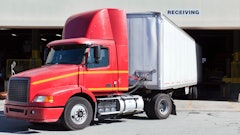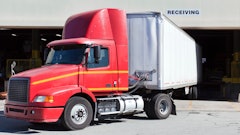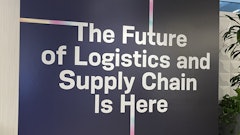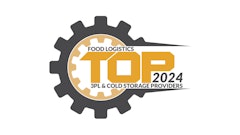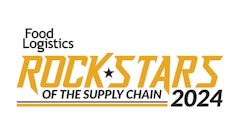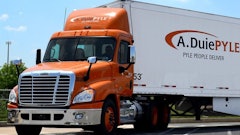The quest to find the perfect third-party logistics (3PL) match to meet the needs of your company can be a daunting task. The first step on the journey is to understand your day-to-day business inside out, as well as what your anticipated future requirements will be. The creation of a thorough and thoughtful request for proposal (RFP) is paramount, but the process involved can be overwhelming if you are not certain about what you should include in the RFP so the process delivers the most effective solution to keep your operation running as efficiently as possible.
A well-developed RFP will offer potential 3PL candidates a clear picture of your operations; if your RFP lacks pertinent data, you could wind up with an ill-fitting solution. “One of the stumbling blocks I have noticed over the years is that many manufacturers don’t really know their business operations well enough so they can articulate their requirements to a potential 3PL in order for that provider to create the proper solution for them,” notes Joe Marelli, vice president of logistics for New World Pasta and Riviana Foods, Harrisburg, PA.
So how should a company proceed in the journey to find the perfect match in a 3PL? Our experts offer an excellent roadmap to discovery.
1. Design The RFP
Before you even begin this journey, ask yourself if your company has the in-house expertise and manpower to prepare an RFP, send it out, manage the responses, and then manage the evaluation process, advises Joe Sullivan, principal at Tompkins Associates in Raleigh, NC.
Putting together an effective RFP is critically important, but some companies just might not have the people or time to develop an effective one. “A good independent consultant can help you draft the RFP,” says Tom Patterson, senior vice president of warehousing operations for Saddle Creek Corp. in Lakeland, FL.
Patterson suggests having in the mix a group of about six or seven candidates with the industry experience you require. Once you have determined who will be developing the RFP, here are some suggestions to assure its effectiveness.
Develop clear objectives: “You need to be clear about your day-to-day operations and particularly those operations you plan to outsource,” advises Sullivan. For instance, let prospective providers know if you will be outsourcing your warehousing operations, transportation management, or both.
Include critical data: Include complete and accurate historical data showing what your business looks like today, continues Sullivan. “Then develop the best possible projections for the future of your business. If your business will double over the next few years, you should advise the respondents of this possibility.”
Identify your metrics: Advise your candidates what your KPIs are, Patterson says. “Include the metrics that define the goals of your operation once it’s up and running so your bidders are not just guessing. Your RFP has to take into account the extremes of your business such as an inventory that can fluctuate from a half million cases to 1.2 million cases.”
You should have a clear understanding of how you want to handle paying for warehouse space, especially when your inventories are low, when you might want to share the space and cost with another company.
If a company has recently grown through acquisition, it might be trying to handle disparate systems of its own as well as those of the acquired company. “In a situation like this, it is very difficult to get your mind around how much inventory your 3PL will be responsible for managing,” notes Marelli at New World Pasta.
“I have seen a manufacturer that scoped the space he would need at a solution of 100,000 square feet of warehousing space. But when inventory started transferring into the new startup, he discovered he really required 150,000 square feet of space because he didn’t understand what stacking requirements were applied to each of the SKUs,” says Marelli. “So the assessment has to be this tactical in order to provide good, clear metrics that define the nature of your business so the solution is exactly the right one.”
Be clear about your expectations: Include the service levels you expect and the level of reporting you require, Sullivan says. “Do you want 99 percent inventory accuracy and 99 percent order accuracy, for instance? These kinds of expectations need to be determined and expressed upfront.”
Establish a uniform communications source: This could be the consultant, notes Patterson. No matter how good the RFP is, questions will still arise and having one person oversee the communications process will give bidders a better chance of offering apples-to-apples quotes.
2. SHARE A COMMON MINDSET
The partnering companies need to share a common mindset regarding the relationship, says Sullivan at Tompkins. “People have to understand this will be an ongoing relationship involving a lot of give and take.”
Ideally, the relationship between your company and your 3PL partner should be one based on reciprocal trust and respect. Kenneth Cubberley and Ed Stevens can certainly attest to this. “The only way to achieve a great partnership is for Keystone and its customers to share in the successes as well as the difficulties,” says Cubberley, president of Keystone Logistics in South Bend, IN.
Ed Stevens, vice president of operations for Darifair Foods Inc. of Jacksonville, FL, recently booked with Keystone a shipment of frozen pies worth about $45,000. Confusion during a delivery delay resulted in the reefer being turned off long enough to thaw out the product.
“Ken delivered us a check for the full amount of the loss,” reports Stevens. “He told us he knew the carrier would eventually cover the damages, but he didn’t want us to be out that amount of money in the meantime. I will tell you that kind of commitment goes a long way in our relationship with Keystone Logistics. They are a special 3PL to us and we will be dealing with them for a long time to come.”
While Keystone did recover about 75 percent of the claim, Cubberley resolutely defends his company’s philosophy. “We treat our customers as if we operate as a first-party provider in that we will settle claims immediately with our customers; then we go to the carrier to collect,” he says.
Marelli at New World Pasta and Riviana Foods offers a word of caution regarding mature relationships. “I would sensitize companies looking to outsource to be very committed because as the relationship matures, there is only so much cost that you can get out of it before you start looking at how to take out margins for the provider,” he says.
“For example, your financial folks might want you to squeeze margins to save more money because all the efficiencies have already been driven out of the supply chain. But when you do this, the relationship is no longer a viable business opportunity for the provider and the relationship can sour quickly. You have to be reconciled to the fact that 3PLs are in business to make a profit.”
3. REQUEST TECHNOLOGICAL SOPHISTICATION
One main reason companies outsource is to avoid investing heavily in warehouse management systems and transportation management systems. The experts stress finding a 3PL whose operating systems are scalable. “The WMS should be robust enough to handle the changing requirements of your customer base,” says Marelli.
Practice due diligence to assure the 3PL’s systems capabilities integrate well with your ERP, continues Marelli. Whether it’s an out-of-the-box solution or a homegrown one, be certain that the system continues to be state-of-the-art and that it provides the functionality you require for communicating EDIs and ASNs.
“Make sure they offer real-time visibility on inventory and that they can manage stock rotation parameters,” he suggests. “They should have the ability to identify where product went in the event of a recall.”
A 3PL’s TMS should also be robust, with good EDI communication between the carrier and the provider. “I want to know when an item is picked up and when it is delivered to my customer so I can measure on-time delivery performance. So shipment event tracking is very important,” Marelli says.
The 3PL should have the ability to maintain impeccable control of your inventory so lots are maintained properly, says Carl Neverman, vice president of client solutions for LA-based Weber Distribution. “We like to have our customers provide us with details on the shelf life of their products. We developed reporting capabilities that create buckets that can send alerts when there is an overabundance of product or when a product has so many days of shelf life left.”
The big item everyone wants today, notes Patterson at Saddle Creek, is for a 3PL to demonstrate ongoing process improvements and cost improvements. “A 3PL should be able to show they continually bring value to the partnership.”
4. KEEPING PACE WITH GROWTH
A 3PL who is flexible enough to grow with your business is critical, notes Marelli. “You need to have a company that can accommodate your requirements in your current growth mode, as well as those requirements as you grow. If you acquire a company that increases your footprint by 30 percent, you don’t want to have to go out and re-bid the network; you want your 3PL to be able to absorb that additional business.”
Riviana Foods has been using Weber Distribution for the last four years. Weber had purchased the 3PL that had been servicing Riviana Foods and has been the supply chain solution provider since that time. “We ask our customers to open their books and share forecasts with us so we can match the space and labor requirements to meet the business needs. More importantly, we need to know what their expectations are so we can match our deliverables to what they require today and into the future,” says Neverman.
It is important for a prospective candidate to be able to expand into other areas where you might be establishing new markets, advises Marelli. “Some 3PLs with no national presence might expect their clients to fund the necessary infrastructure in a new market, but we won’t do that.”
Marelli advises knowing what the 3PL’s bench strength is.
“When my business grows, I want to know what succession planning regime they have in place. I want them to be able to take the best practices for the business they currently do for me and deploy those same practices to my new site,” he says. “This requires that the people working in the current operation relocate to manage the new site—or they will train new personnel to effectively manage the new operation.”
5. MAINTAIN CONTROL
Stevens reports that a top priority for Darifair Foods is knowing its 3PL can come through to save the day for them if a truck has a breakdown or an accident. “This is why we look for an asset-based 3PL who also uses other carriers. If we have a problem with a non-asset-based, we don’t have the same control of recovery as we do with an asset-based company like Keystone Logistics. In the past, we have let 3PLs go because they fell down on service.”
Darifair will pay more for service that provides the peace of mind that its deliveries will be made on time, Stevens reports. The company supplies to major national restaurant chains—like Applebee’s, Ruby Tuesday, Wendy’s, and Chic-fil-A—through their respective DCs. “These DCs expect a load at a certain time on a particular day and if we miss the time, we get into trouble; if we miss the day, we are in even bigger trouble.”
6. ASK ABOUT FINANCIAL HEALTH
Cubberley suggests determining if the 3PL is capable of handling a large amount of money through their system in a negative cash flow situation. “In this industry, you are operating in a negative cash flow for the most part because you always end up paying your carriers before you get paid,” he says.
“Our experts advise asking prospective 3PLs for their P&L data over the last several years so you can see any trends that might be informative to your ultimate decision.”
Make sure your 3PL is financially healthy, has stable leadership, and has good relationships with its banks. “Ask about their growth objectives year over year because if they take on too much growth, that could sacrifice the business they already have,” suggests Marelli.
In the final analysis, a 3PL has to be a good fit with the culture of its clients, notes Neverman at Weber Distribution. “Our role is to be a trusted advisor as well as solutions provider. We always have to be thinking of creative ways to get our clients’ products to market cheaper, smarter, and quicker. There needs to be a reciprocal degree of trust in each others’ expectations and deliverables,” he says. “The relationship is really a strategic part of having profound knowledge of our partners’ business and being aware of their shifting expectations so we can always be there for them when they need us.”







